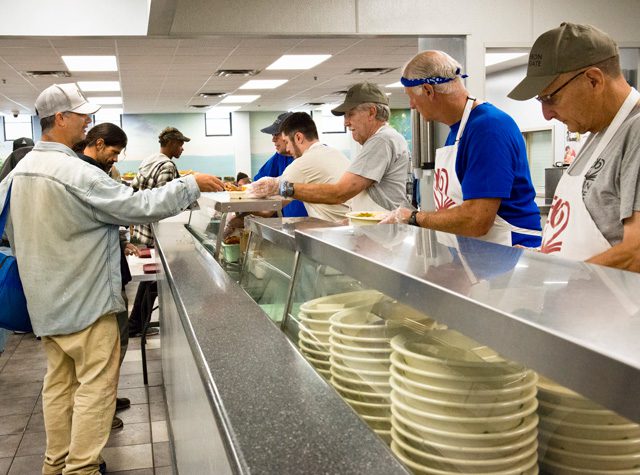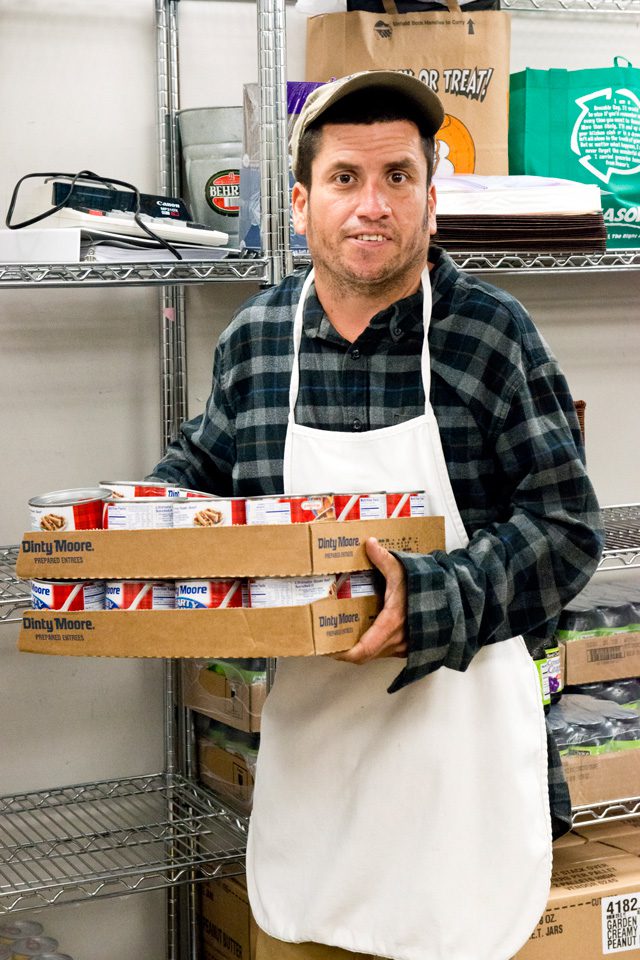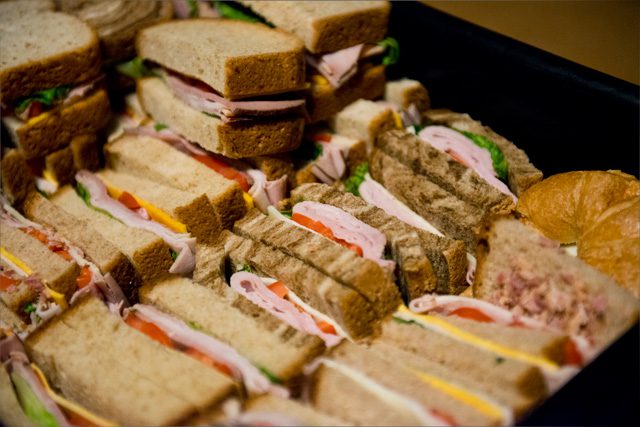
[dropcap]With[/dropcap] the holidays approaching, many of us are looking forward to feasting with our families. But for plenty of Oklahomans who don’t have enough to eat, it’s just another time they’ll go hungry.
According to the Oklahoma Policy Institute, the number of Oklahomans suffering from food insecurity outpaces the national average, with more than one in four Oklahoma children relying on the Supplemental Nutrition Assistance Program, the modern iteration of food stamps more commonly known as SNAP, to meet their nutrition needs.
“I have been working with non-profits for more than 20 years, primarily in international relief and development,” says Cari Ogden, vice president of community initiatives for the Oklahoma City-based Regional Food Bank of Oklahoma. “ … I’ve witnessed desperate conditions while living and working in Eastern Europe and Africa. But it wasn’t until the path of my life led me to food banking that my eyes were opened to similar conditions here in our own country. Hunger is very real right here in Oklahoma City.”
[pullquote]We live in a remarkable country, yet there are still many in every state that simply cannot afford to feed themselves and their families.”[/pullquote]Enough food passes through the doors of the RFBO every week to feed 126,000 Oklahomans. The food bank serves as a repository for donated goods that ship out to more than 1,300 charities and schools in 53 Oklahoma counties. The goods go to food pantries, senior feeding centers, boys’ and girls’ clubs, and other organizations feeding the state’s hungry citizens. During fiscal year 2016 alone, the Regional Food Bank of Oklahoma distributed 52 million pounds of supplies.

Ogden is particularly concerned about some of the Oklahomans that fall into the limbo between qualifying for SNAP and the financial ability to realize food security.
“Many Oklahomans simply make too much money to qualify for SNAP benefits, but not enough money to keep food on the table for their family,” she says.
According to Ogden, that’s where food banks like the Regional Food Bank of Oklahoma and their partners come in — to fill that gap.
“We envision a hunger-free Oklahoma,” Ogden says, “where everyone has access to food, regardless of circumstance. Oklahoma consistently ranks among the hungriest states in America, where one in six struggles with hunger every day. The majority of those served by the Regional Food Bank are chronically hungry children, seniors living on fixed incomes and working families who have difficulty making ends meet.”

The Community Food Bank of Eastern Oklahoma serves as a food distributor for 24 counties. Eileen Ryan Bradshaw, executive director for the food bank, notes that the conditions that lead to hunger in Oklahoma are not unique to the state; they are instead intricate and more widespread.
“We live in a remarkable country, yet there are still many in every state that simply cannot afford to feed themselves and their families,” Bradshaw says. “It is a complex issue that encompasses education, wages, transportation and equality. The North Texas Food Bank had a billboard that illustrated the dilemma. It showed a woman’s face with the line ‘Paycheck on the first, pay rent on the second, hungry on the third.’ That is the new reality for so many of the working poor.”
Goods from these two food banks often wind up in places like Iron Gate LLC, a soup kitchen in downtown Tulsa. For two hours every morning, Iron Gate’s kitchen serves hot meals to around 600 hungry people, says marketing coordinator Tori Lieberman. In addition, the organization runs an emergency grocery pantry for families in need.
“In our history, no one has been turned away hungry,” Lieberman says. “Iron Gate’s mission is simple. We feed the hungry of Tulsa – every day. We feed people in three ways: through our soup kitchen, grocery pantry and the Kids Pantry. We call those who eat at Iron Gate our ‘guests’ because we invite them to eat with us. Our philosophy is we are all guests on this earth and guests treat one another with courtesy, kindness and respect.”
Despite the common perception that soup kitchens cater exclusively to the homeless, Lieberman says this is not correct, and that the poverty that breeds food insecurity is much more widespread than people would like to believe.

Lieberman explains that the majority of guests coming to Iron Gate “have homes, apartments or stay in shelters. It is not homelessness that pours through our door every day, it’s poverty and hunger.”
Ogden says that food banks need food, friends and funds on a year-round basis. Financial distributions stretch a long way – four to five meals on the dollar, according to her and Bradshaw – with the most-needed food donations being canned meat; vegetables and fruit; rice and beans; and peanut butter.
“All of us know someone that is hungry, even if we don’t realize it,” Bradshaw says. “People are often embarrassed to admit that they cannot afford food. It is a problem that can be fixed – there is enough food, we just need to keep working on the issue. We can solve it, together.”
Want to help out?
To join the fight against hunger, information on how to volunteer
or donate can be found below.
Regional Food Bank of Oklahoma
regionalfoodbank.org
Community Food Bank of Eastern Oklahoma
okfoodbank.org
Iron Gate LLC
irongatetulsa.org






















